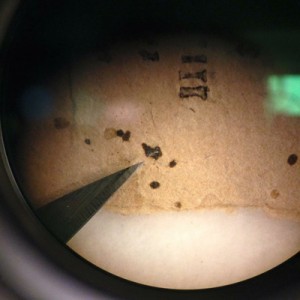“Eine der beliebtesten und bekanntesten Schauspielerinnen des deutschen Stummfilms… One of the most beloved and best-known actresses of the German silent movie industry.”
That’s the verdict of Die freie Enzyklopädie, Germany’s homegrown Wikipedia. Yet this actress who skyrocketed to about a decade of European fame wasn’t German.
In the days when German Expressionism was pushing cinema forward — Fritz Lang’s Metropolis was probably the greatest film of the 1920s, alongside the silent horror classics Nosferatu by F.W. Murnau and Robert Wiene’s The Cabinet of Dr. Caligari — Fern Andra was almost a household name in Germany. Yet her roots were deep in the American Midwest. In addition to acting in bloody horror flicks, Fern worked as an American spy, married a German baron and a boxing champion, fell from the sky almost to her death with one of Germany’s great fighter pilots, and even tangled with one of the most evil men in history.
(Weimar-era German cinema was known for its revolutionary costume artistry, stage design, and the creative genius of its women. One of the great characters of Fritz Lang’s Metropolis was a “gynoid” robot called Maschinenmensch. C-3PO’s cinematic grandmother was played by actress Brigitte Helm, who died in 1996. Lang’s movie was based on a novel by his wife, Thea von Harbou.)
Fern Andra was born Vernal Edna Andrews in 1894 in Watseka, Illinois, a small Kankakee Valley farm town about fifteen miles west of Kentland, Indiana. Her parents were William P. Andrews and Sarah Emily Evett, also known as Sadie. When Fern’s father died in 1898, Sadie remarried Frank St. Clair, a vaudeville actor, circus performer, and tight-rope walker.
Learning stunts from her stepfather, Fern began her stage career at the Stephens Brothers Opera House in Watseka. Aged ten or eleven, she headed to Chicago with a theatrical troupe, performing at the Globe Theatre. Between about 1905 and 1913, Fern went to school in Hammond, Indiana, where her mother and stepfather had relocated. Sadie St. Clair owned or rented a house at 184 State Street and later lived in Gary. Her daughter was remembered as a “Hammond girl” and would often come back and visit her family in northwest Indiana.
It’s not clear how she evaded her classes in Hammond, but by age fifteen she was part of the Millman Trio. Headed by the famous high-wire walker Bird Millman, the trio performed for President Taft at the White House in 1909. (Born Jennadean Engleman, Bird later became a dancer in the great “theatrical juggernaut,” the Ziegfeld Follies.)
By 1914, when World War I broke out, 20-year-old Fern had gone to Europe, where she was a popular stunt performer and minor stage actress. That year, she found herself trapped in Germany. But since the U.S. didn’t go to war against the Kaiser’s armies until 1917, she wasn’t considered an enemy alien and was even offered movie contracts. As “Fern Andrée,” she had already appeared in silent short films called Das Ave Maria (1913) and Mondfischerin (“The Fisher of the Moon,” 1914). During World War I, the midwestern actress starred in over twenty German films. She had probably become fluent in the language by then, but since these movies were all silent, her nationality wasn’t important. . . until she was accused of being an American spy.

The details are sketchy, but sources agree that Fern — who now went under the sultrier stage name “Andra” or even “The Andra” — was at least detained by German police. In the 1950s, she claimed that her personal acquaintance with Kaiser Wilhelm himself saved her. “I was accused of spying for the Allies,” she remarked:
It was true, but not for the reasons they thought. Actually, I was a courier, memorizing coded messages and repeating them to American contacts in Copenhagen… I was lucky. I was a movie star at the time, living in Berlin and a friend of the royal family. To save me, it was arranged for me to marry Baron Frederick von und zu Weichs, a member of the Hohenzollern family.
The rumor in America, however, was that Fern had been condemned to death by a firing squad. Gossip about her death came out in the Hammond paper just three days before the war ended.

Bavarian Baron Friedrich von und zu Weichs was said to be a nephew of Zita, the last Empress of Austria. Fern and Friedrich were married September 28, 1918, and the “Hammond girl” immediately became Baroness Weichs. About a month later, just a few weeks before the war ended, her husband was killed on the Western Front.
Fortunately, she’d come into some money. By 1919, when the former Hoosier girl made the front page of the Lake County Times, Baroness Fern, who had briefly been detained as a P.O.W., was running her own film company in Berlin.



Though its military was banned and its economy was in shambles, as the Jazz Age dawned, Germany entered a period of cultural brilliance known as the “Weimar Era.” Berlin in the 1920s was chaotic but saw the rise of iconic German geniuses like the Bauhaus architects, Expressionist filmmakers and painters, and some of the best-known German philosophers and writers. Fern Andra was part of this incredible, if often bizarre, cultural cocktail.
In 1920, she played a leading role in a new Stummfilm (silent film) called Genuine: A Tale of a Vampire. Made by filmmaker Robert Wiene, Genuine was filmed in the same vein, part-horror/part-fantasy, of Murnau’s vampiric Nosferatu. Fern plays a high priestess, named “Genuine,” who steps out of a painting and comes to life, then turns to bloodsucking. In one scene, Andra caused a sensation by appearing in an outfit that had merely been painted onto her body. Though it starred the actress hailed by many as “the most beautiful girl in Europe,” Wiene’s film wasn’t well-liked and critics called it a failure. Twenty-first-century moviegoers would like it even less, but its stage design and outrageous costumes are still interesting — if only for the background, which evokes the kind of graffiti you could see sprayed on the side of a Burlington Northern freight car.



When Genuine hit the silver screen, World War I was over. But in 1921, Fern Andra was involved in a famous accident that cost the life of one of Germany’s greatest fighter pilots.
Lothar von Richthofen was the younger brother of Manfred van Richthofen, best-known to Americans as the “Red Baron,” Germany’s ace warrior of the sky. Manfred was shot down and killed over France in April 1918, but Lothar was almost as famous. After the war, he worked as an airmail pilot and taxied passengers between Hamburg and Berlin.
On July 4, 1922, while flying Fern Andra and her director Georg Bluen into Hamburg’s Fuhlsbüttel Airport, Richthofen’s engine gave out and the plane crashed. The great pilot was killed, but Andra and Bluen, though injured, survived.

In 1923, the Hoosier beauty married German middleweight boxing champion Kurt Prenzel, who had been interned as a POW at Knockaloe on the Isle of Man. In 1925, Prenzel saved his wife from being bitten by a supposedly rabid dog and suffered a bite that kept him from boxing for about a year, a fact that reportedly figured into their divorce around the time he emigrated to New York City in 1928.


In addition to acting, Fern wrote or directed about twenty German films, but called her German film career quits in 1927. Her last movie made there was Funkzauber (Radio Magic). Until about 1930, she remained active in the Hollywood film business, and even married actor Ian Keith in Tijuana, Mexico, in 1934. Keith would star as Octavian in Cecil B. DeMille’s Cleopatra and as Bill Thorpe, a Louisiana gambler, in the John Wayne film The Big Trail. Andra and Keith divorced in Chicago a year after their wedding.
Meanwhile, she was paying visits to her mother, Sadie St. Clair. In the 1930s, Sadie was living at 636 Washington Street in Gary, Indiana, in “a crowded flat over a furniture store.” The address is right across the street from one of Gary’s most iconic and photographed ruins, the abandoned City United Methodist Church. Though it has sat empty and gutted since the late 1970s, plans are on the table to transform the old church into a European-style “ruin garden.” The German Expressionists would have been the first to use this gloomy Rust Belt ruin in their films. One can easily imagine the specters of F.W. Murnau and Robert Wiene creeping out of the choir stalls, and Fritz Lang would have been fascinated by the fiery steel mills and modernist clamor of Gary before the city slipped into decline.




Though she was spending most of her time in California by this time, Fern’s involvement with Germany wasn’t over. In the early 1930’s, she challenged the rise of Nazism. The militaristic party of thugs opposed almost everything Weimar culture stood for, to the point of burning its books and destroying its art.
There had once been unconfirmed rumors that Fern had had a love affair with Adolf Hitler’s “Minister of Public Enlightenment and Propaganda.” Andra apparently knew the despised propagandist Joseph Goebbels before his rise to power, and she remembered him later as a “mousy tutor.” (Goebbels had studied philosophy at the University of Heidelberg and was the perfect example of a good education gone awry.) In 1937, Andra and Goebbels clashed over the freedom of foreign artists to be active in Nazi Germany. She had even testified before the U.S. Congress about the Third Reich’s discrimination against non-Aryan artists.
Engaging in a “verbal fusillade,” according to one account, Goebbels and Andra got into a fight during which the Propaganda Minister threatened to imprison her. He then systematically went about trashing her reputation, even claiming that she was a Hungarian impostor, not an American. If sources are correct (and there’s a chance they’re exaggerated) Fern escaped by plane into Romania, then headed back to the United States. Since she spoke fluent German, she aided the Allies during World War II by broadcasting radio messages into Germany. Her enemy Goebbels, Hitler’s master of lies, committed suicide in 1945 — after murdering his own children.
Fern Andra continued to visit and live in Germany after the war. In November 1954, she was photographed talking to Baroness Kunigunde von Richthofen, mother of Manfred and Lothar. They met up at the American Civilian Club in Wiesbaden.

Fern and her fourth husband, a playwright and soldier from Connecticut named General Samuel Edge Dockrell, seem to have lived in Wiesbaden and New England until the early 1970s, but often visited the Midwest. They eventually moved to South Carolina, where Dockrell died two days after they got there.
Baroness Fern Andra, Hammond girl, succumbed to cancer at Azalea Woods Nursing Home in Aiken, South Carolina, at age 80 on February 8, 1974.
Her fame vanished in the 1940s, and few Americans would know her name today. But Hoosier State Chronicles would like to put her back out there as one of the most interesting women who has ever lived within the borders of our state.












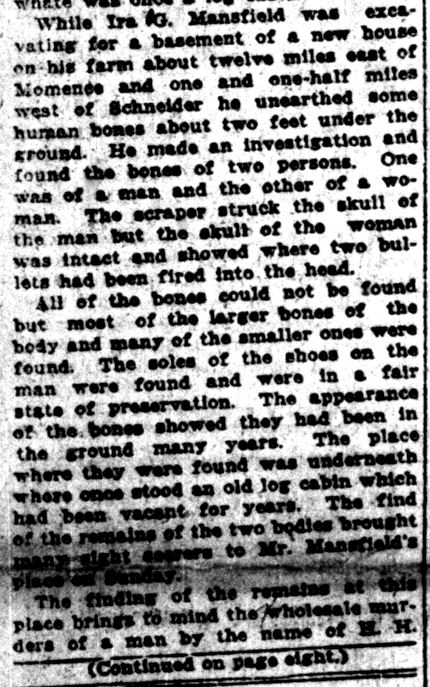




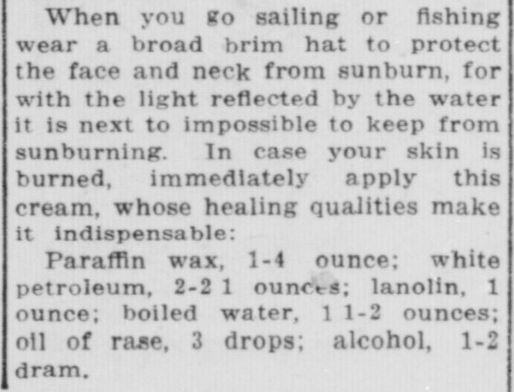
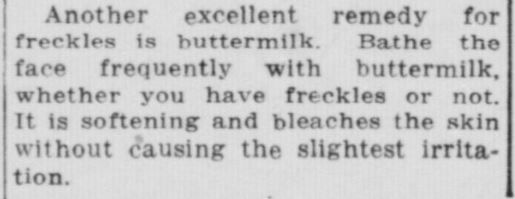



























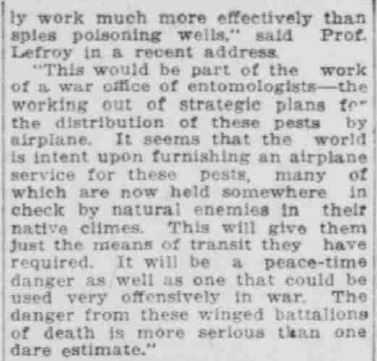 South Bend News-Times, May 19, 1920.
South Bend News-Times, May 19, 1920. 

























